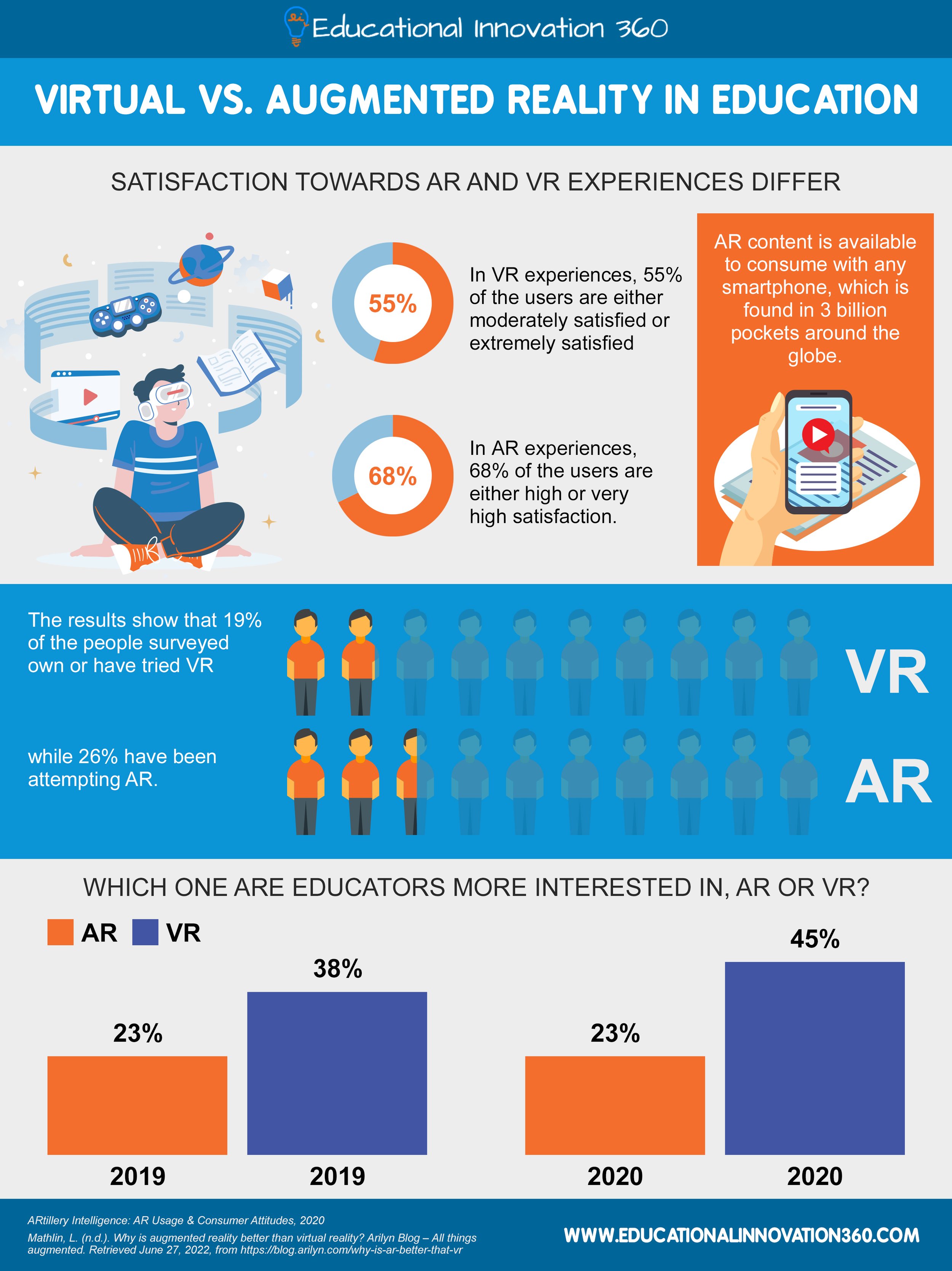Does Your School Utilize Virtual And Augmented Reality
The world of education is about to turn upside down on its head. Social media and the internet have changed a lot of educational methods, lessons, curriculums, and pathways in one way or another. But the next groundbreaking technology that will transform the entire field as we know it will be virtual reality and augmented reality.
As of 2022, the only true barriers to implementing virtual reality learning throughout the U.S. educational system are access to sufficient internet, the cost of VR and AR devices, and the lack of educational programs that have already been fully adapted to virtual reality and augmented reality learning. All of these different factors will improve as the government and internet companies install 5G connections throughout the country, more and more video game designers pair with educational developers to create learning environments, and VR companies find new and cost-effective ways to develop goggles and glasses.
There are several useful reasons why teachers should advocate for their schools and districts to develop some of their curricula to take place in the virtual world.
One reason is so that students will be able to explore not only our modern world but also ancient civilizations. Students who are in History Class can walk in the shoes of the World War II Soldier running on the beaches of Normandy on D-Day or they can experience the terror and fear of the people who lived in Pompeii when the volcano finally erupted. When students are in science class, they can put on virtual reality glasses and shrink down to the size of an atom (TeachThought).
Another reason to use virtual reality in the classroom is so the students can exercise their creativity in ways they've never had before. They can do this by creating their educational content for the students of next year. Teachers and educators are the ones developing programs and lessons, but students are the ones that can help create assistants and aides since they are the ones who are trying to learn the material (Pickard & James, 2021).
The cost of VR devices is dropping year by year. Plus, when schools provide these tools they are not the top-of-the-line gadgets; teachers are grateful to have anything to enter into a virtual classroom. They only need goggles that allow them to see in every direction. Google Cardboard is a simple $10 device that turns a smartphone into a virtual reality device. It may be a bit rudimentary, oh, but the child will still be able to see in 360 degrees.
There are many other cheaper VR devices now available online. The cheapest devices range anywhere from $13 to $50. Using cheaper devices than the Oculus VR headset will allow more students to attend virtual reality learning sessions and have “out of this world” experiences.
AR or VR which one would you choose? They are both great tools for the classroom but which one is used the most in education? Make sure you download these stats from the blog! Educational Innovation 360
References
“10 Reasons to Use Virtual Reality in the Classroom.” TeachThought, 16 Jan. 2022, https://www.teachthought.com/technology/virtual-reality-classroom/.
Pickard, James. “The Cheapest VR Headset Deals in January 2022.” TechRadar, TechRadar, 2 Nov. 2021, https://www.techradar.com/deals/best-cheap-vr-headset-deals-prices-sales.

